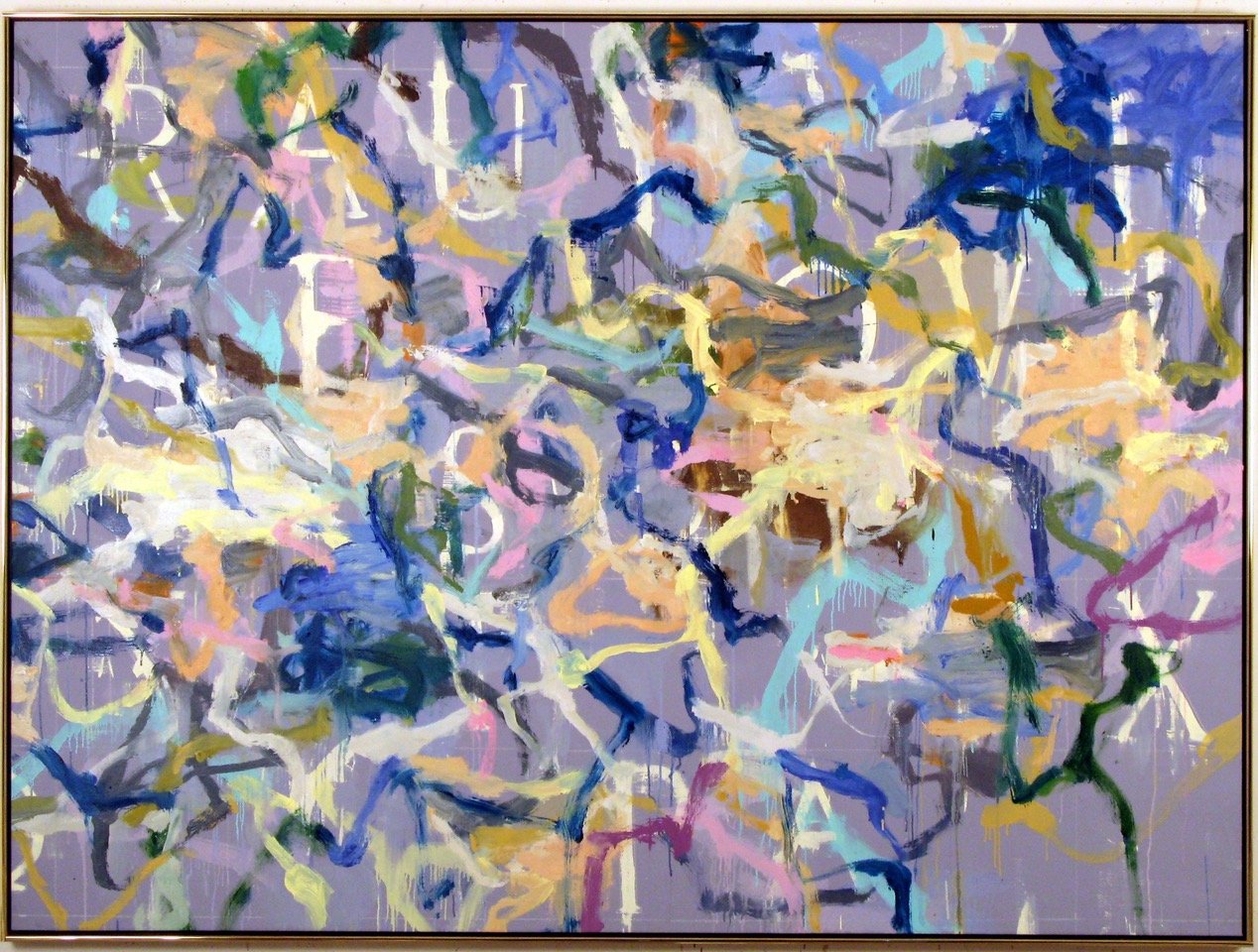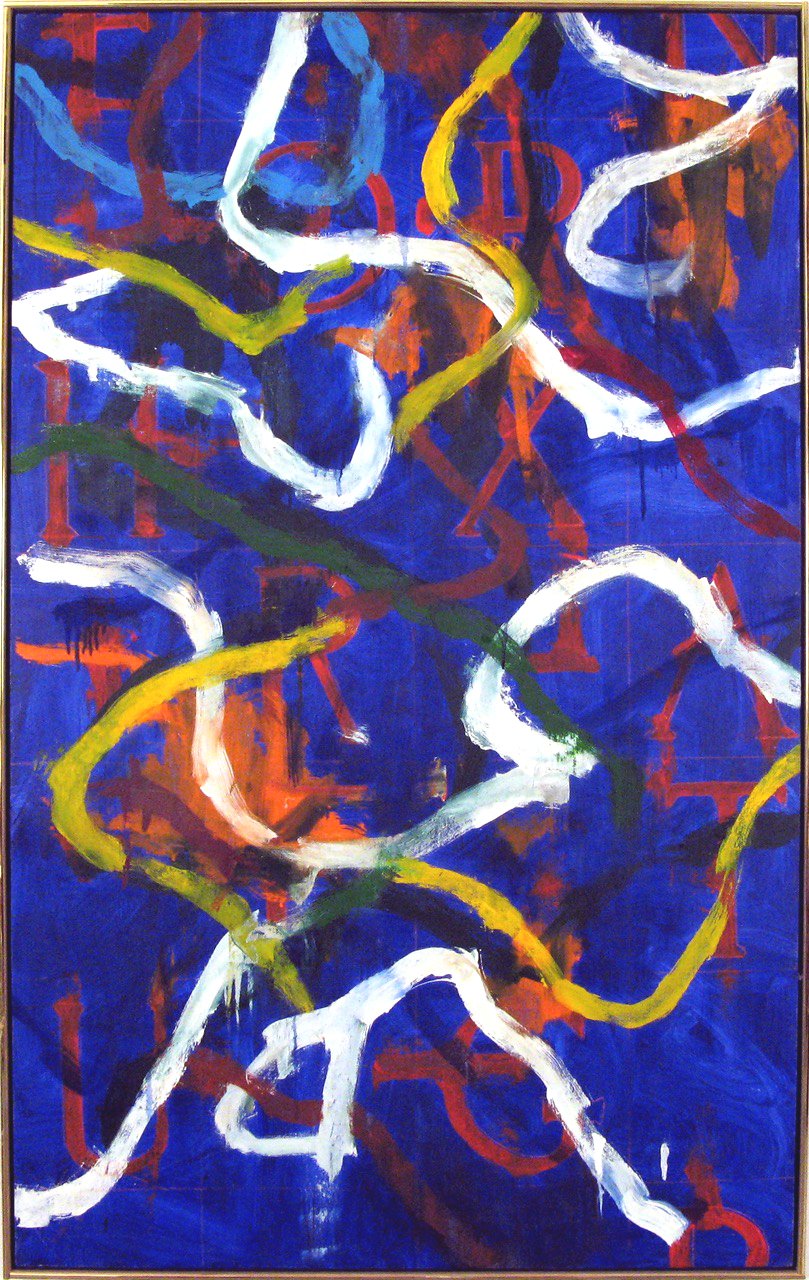
GALLERY 1
Kikuo Saito: Unraveling
Curated by Kikuo Saito Studio
9 Mar. – 5 May 2024
This assembly of seven canvases produced between 2009 and 2012 illuminates a period of swift transition in the figure/ground dynamics in Kikuo Saito’s paintings. During this turn, the grids that scaffold his Alphabet paintings give way to a pale lattice that flickers between the fore and ground, almost disappearing. Here, Saito wove chunky curves into the matrixed pictorial surface, precursors to the robust muscular brushwork of the later painting. In this evolution the letters intermittently located throughout the composition become obscured by the tangles of vigorously sketched and boldly colored lines, culminating in an airy web of sinuous strokes, leaving the order of the letters beneath on the edge of the perceptible.
Saito’s theatrical design and production experience, in the 1960s and 70s for LaMaMa Experimental Theatre Club and again in the late 90s, clearly informed the figure/ground relationships in his paintings and vice versa. The 1996 Toy Garden production at Duke University provided Saito with the opportunity not only to return to theater after a 17 year hiatus but the opportunity to create a pictorial surface at scale. Here Saito first used a grid to organize his stage backdrop, literalizing the play’s setting as text in both English and Italian: “Venice” and “Venezia.” This framework was practical for organizing his letter stenciling and ensuring legibility to the audience. Yet it also allowed for the staggering of lines and blank spaces which suggest the gaps and breaks inherent in translation, something Saito understood through his experience learning English after immigrating to the U.S.
These paintings disobey the logic of the grid and stencil, which is perhaps a gesture of opposition to the disciplining methods of language. They mark a creative efflorescence and exuberant moment of pulling away from the color field ground and the grounding influence of theater in his oeuvre. The concurrent unraveling of the grid, the dis-ordering of language, and the unfurling of the line may be understood as Saito’s resolving his position vis-a-vis painting and theater. As Saito toggled between stage and gallery his audience shifted from static to mobile, his address from collective to autonomous, and the canvas transformed from prop to protagonist. Painting established itself as the central figure and his aesthetic language of choice from then on.
Written by Jess Wilcox
KinoSaito Programs are made possible by the New York State Council on the Arts with the support of the Office of the Governor and the New York State Legislature.








